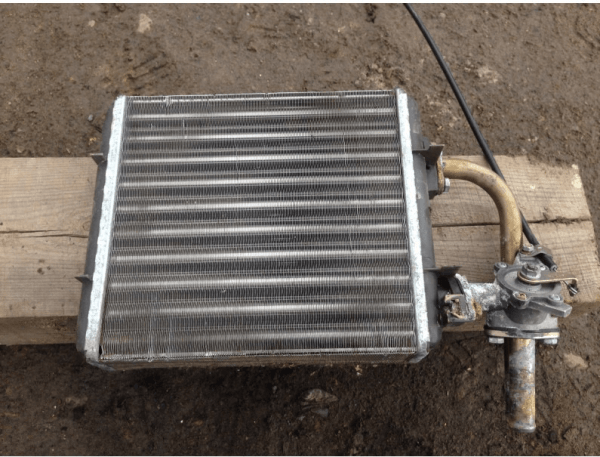
Stove radiator VAZ-2107: rules for repair and operation
Content
The "Classic" of the Volga Automobile Plant is equipped with a simple and fairly reliable heating system that provides quite comfortable driving conditions in the cold season. The VAZ-2107 interior heater is a stove that warms up the air entering from the outside with the help of a radiator filled with refrigerant. The absence of electronics in the design of the GXNUMX heater allows car owners to carry out most of the repair and replacement of various elements of the stove on their own, without experiencing any particular difficulties. The key component of the heater - the radiator - requires special attention, because it is he who ensures a favorable temperature in the cabin. Long-term trouble-free operation of the radiator can be ensured by its proper operation and timely maintenance.
Purpose and principle of operation of the heater radiator VAZ-2107
The source of heat in the heating system of a VAZ-2107 car is the liquid that fills the cooling system. The design of the cooling system is made in such a way that the stove radiator is part of its overall circuit. The principle of operation of the radiator is that air flows, penetrating into the car through the air intake on the hood, enter the heating compartment, where they are heated by the stove radiator and move further through the air ducts to the passenger compartment.

The degree of heating of the air sent to the passenger compartment depends on the temperature of the coolant and the position of the damper of the stove valve. You can adjust the position of the tap using the upper slider of the heating system control mechanism: the extreme left position of the slider means that the tap is closed and the stove is not working, the extreme right position means the tap is fully open.
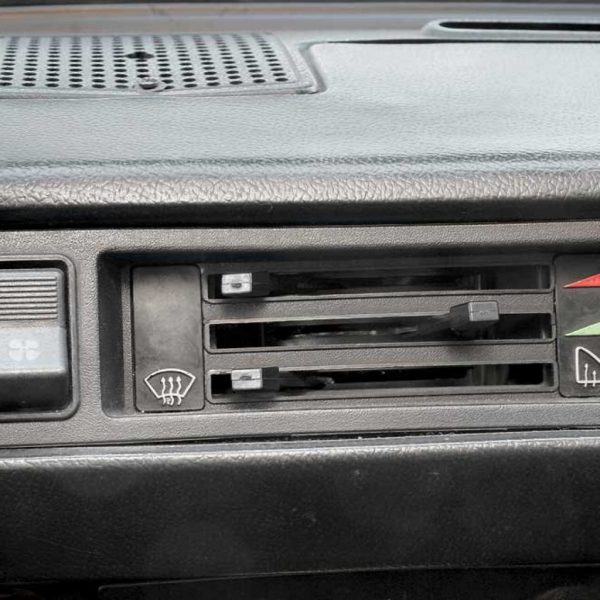
Initially, the VAZ-2107 heater radiators (and other "classic" models) were made exclusively of copper. Currently, many car owners, in order to save money, install aluminum stove radiators, which, although they are cheaper than copper ones, have worse heat transfer rates. The aluminum radiator does not always cope with the large flow of frosty air that enters the air intake when driving on the highway, and in this case the interior does not warm up enough.
The heater radiator can be two or three row. The heat exchanger has a horizontal position and is placed in a special plastic case. The radiator is attached to the body with two self-tapping screws, the valve is mounted in the inlet pipe. Structurally, the radiator consists of:
- systems of tubes located in honeycombs-ribs that improve heat transfer;
- inlet and return tanks;
- inlet and outlet pipes.
Video: recommendations for choosing a VAZ-2107 stove radiator
The cross section of the tubes can be round or square.. Round tubes are easier to manufacture, but the heat transfer of such products is lower than that of square ones, therefore, so-called turbulators are placed inside the round tubes - spiral plastic strips that increase heat transfer rates due to swirling and mixing of the refrigerant. In flat tubes, turbulence is created due to their shape, so additional elements are not required here.
The dimensions of the three-row copper radiator SHAAZ are:
- length - 254 mm;
- width - 67 mm;
- height - 184 mm.
The weight of the product is 2,2 kg.
A two-row aluminum radiator may have other dimensions.
How to choose the best option for a stove radiator for a VAZ-2107
To optimize the operation of the stove, the owners of the VAZ-2107 quite often replace the standard radiator with a heat exchanger from another domestic model or foreign car.
Radiators of other VAZ models
An alternative to the factory radiator of the VAZ-2107 stove can be a similar product from the "five". In general, for the "classics" there are two types of stove radiators - VAZ-2101 and VAZ-2105. Of course, the "five" heat exchanger is suitable for the seventh model. The size of a standard radiator from the "penny" is 185x215x62 mm, from the "five" - 195x215x50 mm, i.e. the product from the VAZ-2101 will not fit into the plastic casing of the "seven" because of its thickness.
Read about the VAZ 2105 device: https://bumper.guru/klassicheskie-modeli-vaz/poleznoe/vaz-2105-inzhektor.html
Video: which stove radiator is suitable for the "seven"


Watch this video on YouTube
If the car owner decided to replace the entire stove, then the most acceptable option is a heater from the VAZ-2108.
From a foreign car
Instead of the “native” stove radiator on the VAZ-2107, you can install a “foreign brand” if it fits in size. Practice has shown that a copper heat exchanger from Mitsubishi turned out to be quite suitable for installation in the "seven".
I had several classic VAZs, and different radiators in stoves and in the cooling system. Based on operating experience, I can say one thing: heat transfer is almost the same due to metal tanks and an additional row of cassettes, it is almost as good as an aluminum radiator in terms of heat transfer. But aluminum weighs less, is practically not subject to thermal expansion. Yes, it has better heat dissipation, when the heater tap is opened, brass gives heat in almost a minute, and aluminum in a couple of seconds.
The only negative is strength, but in our country everyone is trying not to attract masters, but to do something with crooked handles using a crowbar and a sledgehammer. And aluminum is a delicate metal, you need to be gentle with it, and then everything will be fine.
And many say that it tears them with pressure in the cooling system. So, if you follow the valves of the covers of the expander and the cooling radiator, then there will be no excess pressure.
How to properly flush the radiator of the VAZ-2107 stove
During operation, the stove radiator becomes dirty, as a result of which its heat transfer deteriorates. You can restore the normal operation of the stove by flushing the heat exchanger. With maximum quality, you can flush the dismantled radiator, but in some cases you can achieve the desired result without removing the heat exchanger. A simplified flushing scheme involves disconnecting the inlet and outlet pipes in the engine compartment and supplying tap water to one of them. From the second pipe, water drains out. After rinsing with water, the radiator can be filled with a cleaning solution using a watering can and allowed to descale for 2–3 hours, after which the solution can be drained. If the radiator is not very "launched", then such a measure may well improve its operation. At the same time, it should be remembered that an aluminum radiator cannot be washed with alkaline solutions, and a copper one with acidic ones.. For washing, you can use special tools such as "Mole", "Komet", "Tiret", "Kalgon", etc.
How to remove a radiator
In most cases, for flushing, you still have to remove the stove radiator. To dismantle the heat exchanger, you will need:
- keys for 7, 10 and 17;
- Phillips screwdriver;
- spare gaskets;
- rags.
How to unscrew a bolt with erased edges: https://bumper.guru/klassicheskie-modeli-vaz/poleznoe/kak-otkrutit-bolt-s-sorvannymi-granyami.html
After the work is completed, a certain amount of coolant will be required to fill the system.
To remove the stove radiator of a VAZ-2107 car, you must:
- Release the system from the coolant by unscrewing the drain hole on the cylinder block with a key of 17, as well as the caps of the expansion tank and the cooling radiator.
- Open the hood and use a Phillips screwdriver to loosen the clamps that secure the hoses of the inlet and outlet pipes.
- Remove hoses from fittings.

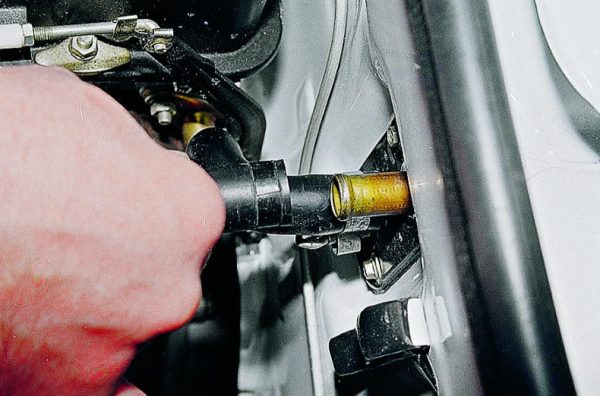 In the engine compartment, remove the hoses of the incoming and outgoing pipes
In the engine compartment, remove the hoses of the incoming and outgoing pipes - Using a 7 wrench, unscrew the two bolts securing the nozzles.

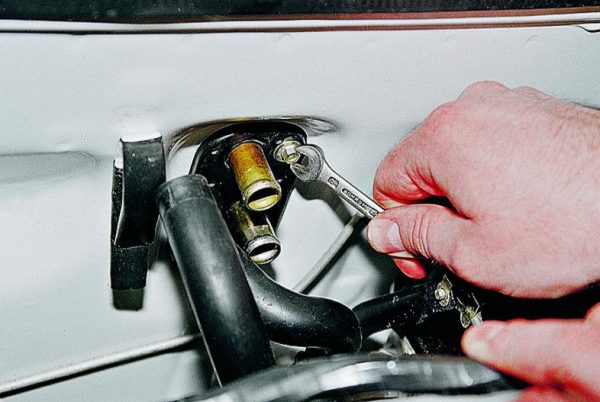 With a 7 key, unscrew the two bolts securing the nozzles
With a 7 key, unscrew the two bolts securing the nozzles - Remove the seal.

 The next step is to remove the seal.
The next step is to remove the seal. - Move to the salon and unscrew the screws holding the radio shelf.
- Remove the shelf and use a 7 key to unscrew the fastening of the radiator valve drive cable.

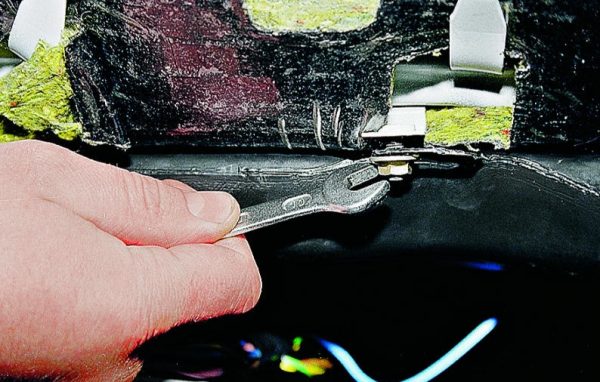 With a key of 7, it is necessary to unscrew the fastening of the radiator valve drive cable
With a key of 7, it is necessary to unscrew the fastening of the radiator valve drive cable - Disengage the steel clips that hold the two halves of the heater body together.
- Remove the bottom half of the stove body.
- Remove the heat exchanger together with the tap.

 After disassembling the stove body, remove the heat exchanger together with the tap
After disassembling the stove body, remove the heat exchanger together with the tap - Using a 10 wrench, unscrew the bolts securing the faucet to the radiator.
- Replace gasket if necessary.
- With a key of 10, unscrew the inlet pipe from the tap and also replace the gasket if the old one has become unusable.

 The gasket should be replaced if the old one has become unusable
The gasket should be replaced if the old one has become unusable
How to install a radiator
You can flush the dismantled radiator:
- water directed into the product using a Karcher installation under a pressure of 5,5 atmospheres;
- caustic soda solution poured into the radiator for 1 hour;
- complete disassembly. In this case, you should unsolder the radiator tanks with a burner or soldering iron, clean the internal cavity of the product with mechanical and chemical means, dry and solder the structure.
Before installing a new or revised stove radiator in place, you should check the operation of the crane. If there are any problems with the old faucet, it is better to immediately replace it with a new one. In addition, sealant is required for high-quality assembly.
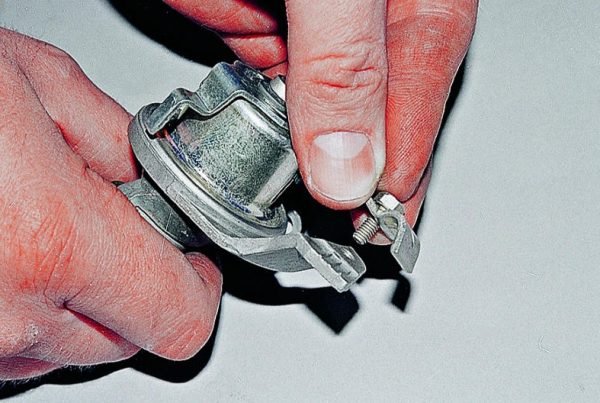

To install a heat exchanger, you must:
- screw the inlet pipe to the tap, placing a new gasket lubricated with sealant between them;
- screw the tap to the radiator housing, also laying a sealant-treated gasket between them;
- put the radiator in place;
- put the hoses on the nozzles and clamp with clamps;
- fill the system with coolant;
- screw on the caps of the cooling radiator and expansion tank and start the engine;
- with the engine running, check the connections for leaks;
- if everything is in order, attach the crane cable;
- reinstall the lower part of the heater housing, securing it with brackets;
- put the radio shelf in place, fixing it with self-tapping screws.

 Before installing new gaskets, they should be treated with sealant.
Before installing new gaskets, they should be treated with sealant.
More about the cooling radiator: https://bumper.guru/klassicheskie-modeli-vaz/sistema-ohdazhdeniya/radiator-vaz-2107.html
The heater radiator, like the usual one, is made of aluminum alloy, which makes it lightweight, durable and reliable. Key features can be found online. The difference between copper and aluminum is that aluminum heats up faster and gives off more heat, while copper, on the contrary, heats up for a long time, but also cools down longer. For Zhiguli, of course, I recommend aluminum, because in a small cabin, it heats up faster and does not allow passengers to freeze.
The radiator used in the VAZ-2107 heater is integrated into the cooling system of the power unit and, despite its simple design, plays a primary role in creating a favorable microclimate inside the car. Like any other vehicle component, the radiator may require revision or replacement after some time of operation. The VAZ-2107 can be equipped with heater radiators made of various materials (most often copper, brass or aluminum) and with different tube configurations (round or square). Any driver can replace the heat exchanger on their own, following a certain sequence of steps. To flush the radiator, use safe products that will not damage the body of the product.

